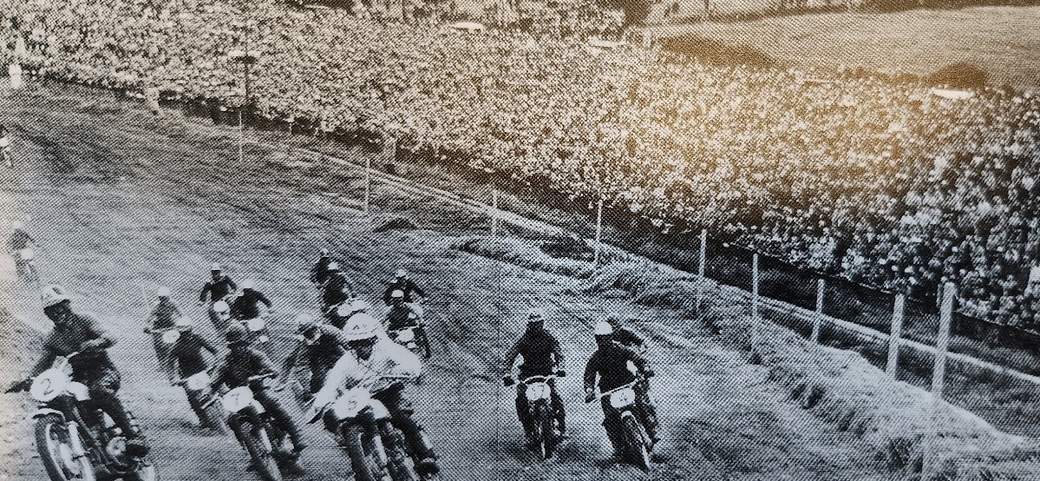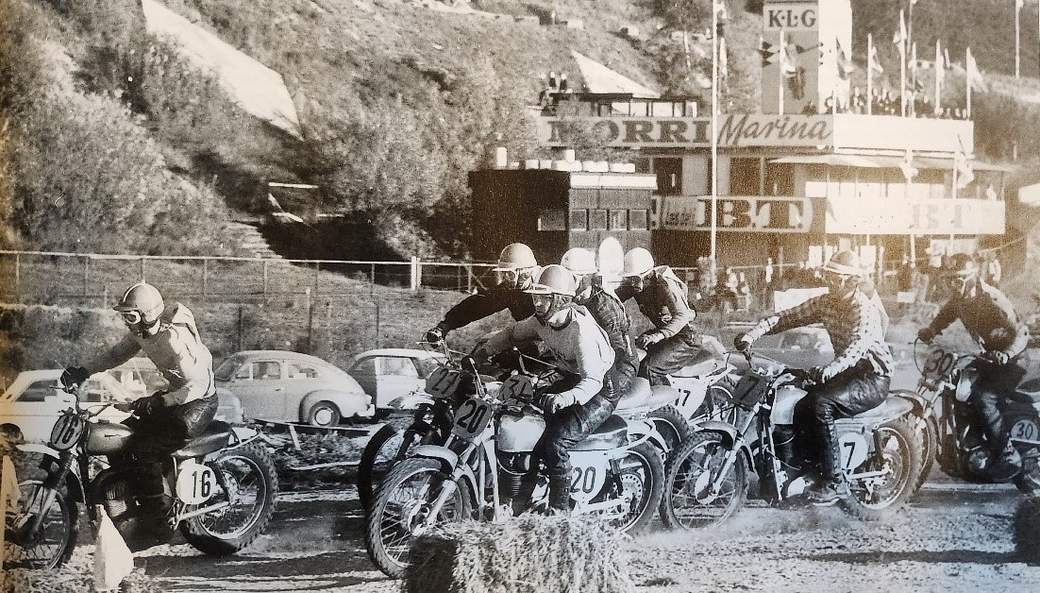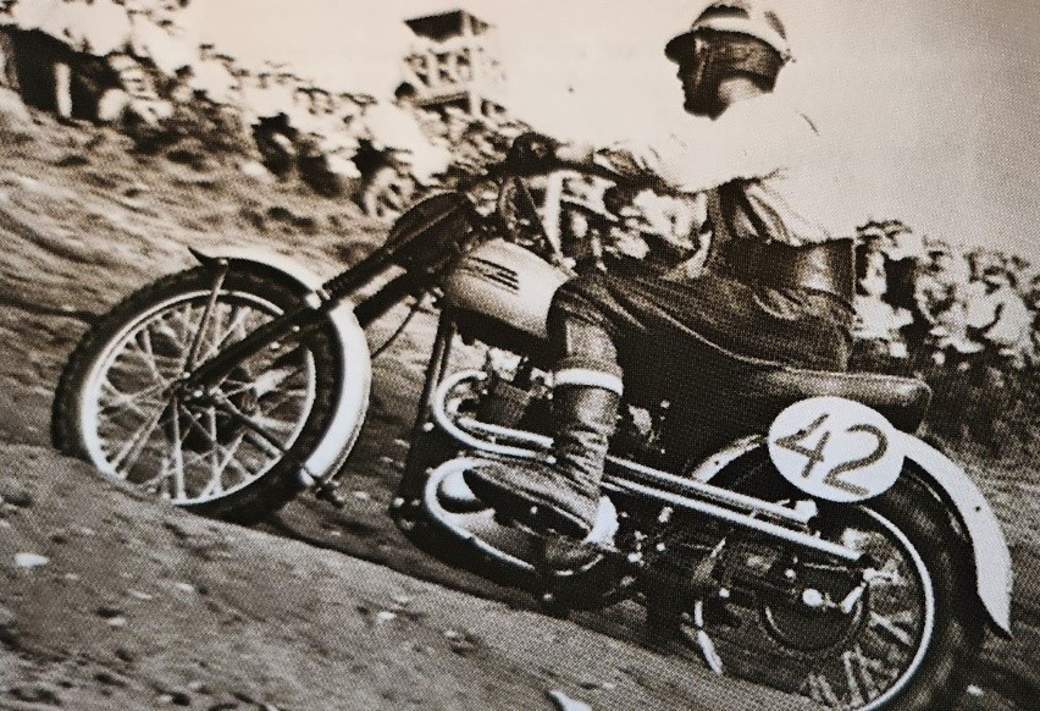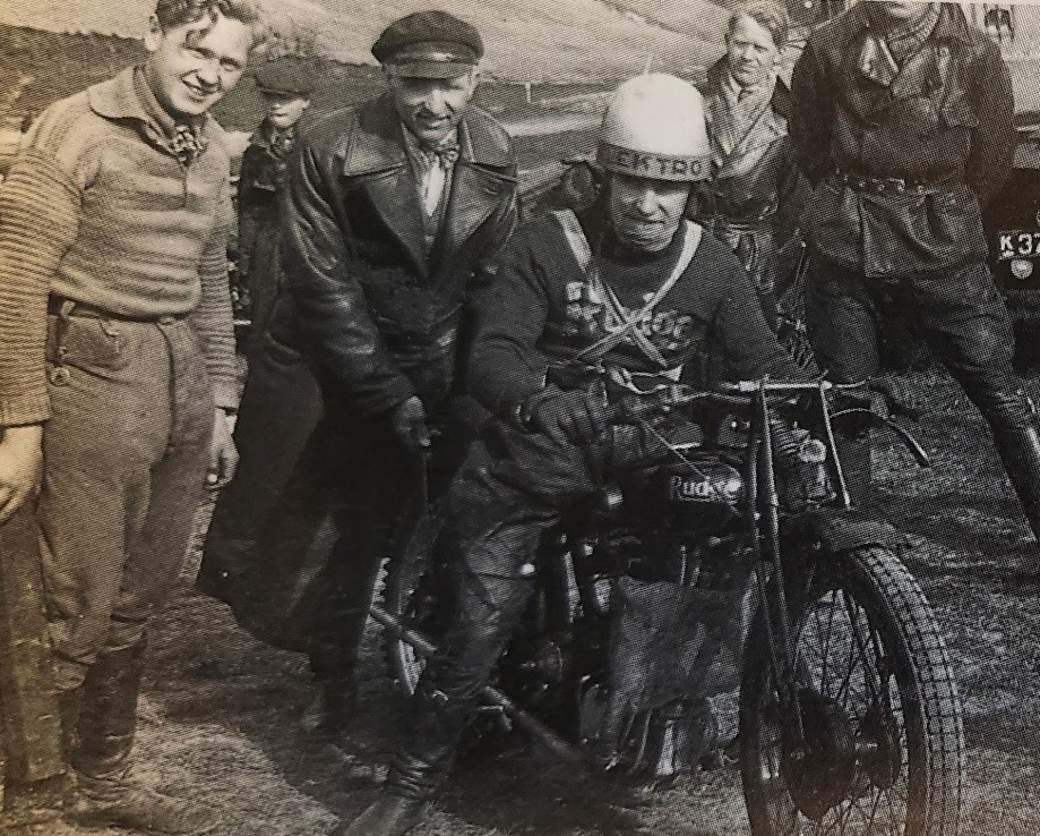Denmark is one of the founding members of the FIM which celebrates its 120-year anniversary this year. The current National Federation, Danmarks Motor Union, was established in 1914 and was affiliated to the FIM on the same year.
Development has always been a priority for those involved in the Danish motorcycle sport. Motorcycling in Denmark was fueled by people who wanted to explore, feel and expand the level of performance of a man and a machine. Motorsport seemed to be an ideal way to do that and organizing riders in a union nationally and internationally was important to expand on both members and activities. So, from the very early days, the focus in Denmark was on making motorsport more available to anyone interested.
Since machines were less reliable back in the day and tracks were almost nonexistent, the practice of motorsport required a lot of dedication from the Danish riders. As the DMU grew and legislation made it illegal to race on public roads, more and more tracks opened to accommodate the demand for racing activities in the 1930s. The following decades throughout the 30s 40s and 50s, more and more disciplines within motorcycle sport, such as Trial, TT Road Race and Motocross, emerged in Denmark after motorcycling sport had started as basic dirt racing. The main goal was to strengthen DMU’s position as the primary organization for Danish motorcycling, which could follow the development of different disciplines, machines and race activities.
After almost a decade of seeking membership in Sports Confederation of Denmark (DIF), DMU president Villy Nielsen accomplished this in 1981 making it easier to get the required permits from the police to host races.
The popularity of motorcycle sport reached its peak in the 70s and 80s with several Danish Speedway riders winning one world championship after the other. Now both the DMU and the motorcycle sport were finally accepted and loved throughout Denmark.
This has been the DNA of the Danish Motor Union ever since. New sports, such as aqua bikes and powerboats have been added. After spending more than half a century to become the leading organization for motorcycle sporting clubs, sporting events, and riders, the DMU expanded its focus on safety improvement, recruitment of youngsters, and environmental projects.
The history of DMU includes many milestones – the main being the five motorsports clubs, Aarhus Motor Klub, Københavns Motor Klub, Motorcykleklubben Elleham, Motorklubben Anglo Dane and Skanderborg Motor Klub, founding the DMU in 1914, back then known as Danmarks Motorcykle Union.
Six years later, in 1920, the members of one of DMU’s clubs with the on-brand name, “Motorsport”, known for its criticism towards racing on public roads, secretly and singlehandedly dug out the world’s first oval-shaped dirt track (Bagsværd-banen) thus initiating the trend to use tracks for races. The track was inaugurated with a big race in front of thousands of spectators with special attendance from the Danish King, Christian the 10th, who spent a lot of time conversating with the riders before the race.
In 1929 the DMU sent its first official Danish national team to compete in a Nordic Championship for dirt track racing held in Norway. The championship consisted of two races and the Danish team won one of them.
In 1932 the federation got a setback when Danish legislation prohibited motor racing on public roads. DMU lost a lot of members and many planned races had to be cancelled. This was when activities started moving to tracks, either permanent or temporary, on private land, which remains the same to this day.
After the Second World War, the industry and interest in motorcycles boomed in Denmark. In 1946 Gentofte Stadium opened and became the first dirt track where people from Copenhagen could witness motor races again. The track would also host many international dirt track races between the national teams of Denmark, Sweden and Norway. The year after, in 1947, a Danish club in the town of Hobro opened Denmark’s first 1000-meter dirt track, and, in that year alone, the DMU had 123 races planned for the season and a total of 7,067 members. In 1948 the Danish government prohibited all motor racing in Denmark due to petrol rationing after the war. The rationing stopped in 1949 and the DMU could reinstate its activities.
The first Danish motocross championship was held in 1955 and, during this race, and many other motocross races to come, the Danish rider Palle Høst became a dominant figure in the sport. He had a long active career but had to withdraw from riding after a serious crash in Germany in 1961. Palle was still a big part of Danish motorsport, being a member of the FIM’s Motocross Commission from 1980 to 1996.
In the 60s Speedway was becoming more and more popular and well-organized, leading to the establishment of the national team tournament in 1967, which also gave rise to the Danish Speedway League in 1986. With the growing interest, the DMU established its first speedway commission that managed to arrange the first tournament where seven teams competed. Esbjerg Motor Sport emerged as the winning team.
On the 10th of September, in 1971, Ole Olsen won the individual world championship starting the era of both Danish dominance in international speedway and the Danish public’s interest in the discipline. Ole Olsen won a total of 23 world championship medals in different speedway disciplines during his career.
In 1988, Danish speedway fans had perhaps their most exceptional experience to date. The individual world championship was settled on the Danish speedway track in Vojens with 31’000 spectators, and the dominating riders, competing for the world championship title, were no others than Danish Hans Nielsen, Erik Gundersen, and the newcomer Jan O. Pedersen. The race was no disappointment, and, by the end, Erik Gundersen emerged as the winner grabbing his third gold medal in the individual Speedway world championship.
In the 90s Danish riders also started to appear in other disciplines internationally. Motocross had been growing in popularity and, not surprisingly, Denmark had produced some skilled riders, e.g. Mikkel Caprani and Brian Kjær Jørgensen, who won individual races and titles in both Nordic, European, and World championships. In road racing, Anders Rasmussen also managed to win the European championship in 1994. 1990 became a big year for the BMX sport with many Danish medals and a lot of attention to the sport during the entire decade. BMX was overseen by the DMU until January 2017 when, both in Denmark and internationally, the federations for cycle sport took over its governance.
Today, the DMU has gone through many changes in its structure since its establishment in 1914. The organization has always sought to modernize itself and has gone from having regional departments nationally to having one secretariat with six employees located with the other Danish sports federations under the Sports Confederation of Denmark (DIF).
However, the structure of the DMU is still mainly built around its original principles, namely focus on volunteers and democracy. The volunteers managing member clubs are still at the core of the organization, electing volunteers who govern the DMU in either sports commissions or the board of directors.
The safety of the riders and the officials is the primary focus of the DMU in its activities, and the organization always looks to implement guidelines and rules that both protect its members and serve as inspiration for other federations in the FIM.
The DMU has always aimed to be a modern organization, while making sure to provide the best possible service for its members and clubs. It has been and still is among the first sports federations in Denmark that provide new IT solutions for the members and clubs.
For motorsport to flourish in Denmark and to keep up with society’s development, the current DMU is engaged in recruiting new and young riders as well as focusing on motorsport’s role in environmental protection.
Talent development has increased over the years with more disciplines offering training programs for young riders. 400 races take place annually to bring together the Danish motorcycling community.
The focus on development, the flexibility of the organization, along with a strong set of traditions and values, have been the key to DMU’s success over the years. Because of that and, despite its relatively small size in both Denmark and internationally, the DMU never shuns from expressing its opinion or doing things in ways that benefit most the sport, the riders, and the clubs.








